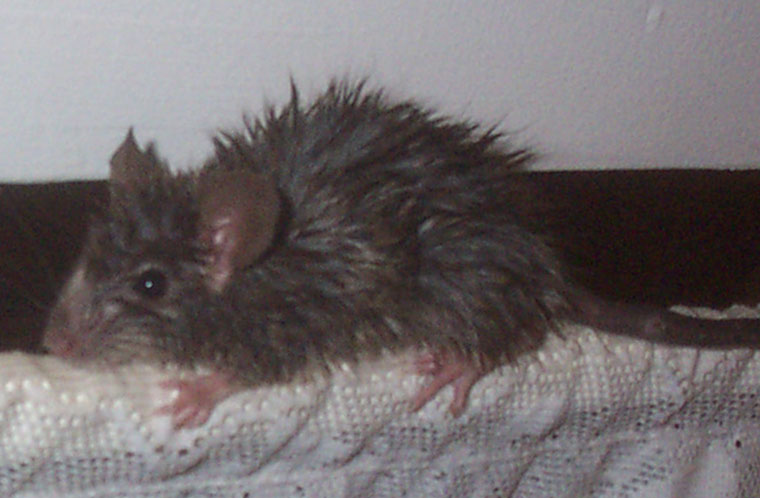- info@wildlife-removal.com
Call us for help in your town
Wildlife Removal Education
How to Get Rid of Rats on the Roof
Need rat removal in your hometown? We service over 500 USA locations! Click here to hire us in your town and check prices - updated for year 2020.
Rats are very good climbers so it's not actually that unusual to see them on the roof, although you're probably more used to seeing squirrels and birds, perhaps the odd raccoon up there.

Roof rats are slightly different to the typical brown Norway rats we know as "wild rats", and the Norway rat is the dominant species. It has actually managed to successfully bully the roof rat out of a number of territories.
Both rats are excellent climbers, but roof rats seem to prefer the roof - as the name suggests - and will almost always build a nest that is above ground. The regular brown Norway rat is just as comfortable sleeping in underground burrows as it is in tree hollows and similar spots.
Both species of rat are attracted to the roof because of the attic - heat rises within your home, so the attic is usually one of the warmest places in the entire building. Not only is it warm and, therefore, a prime hotspot for an ever-growing rat colony, but people don't go up there often. How many times have you been in your attic over the last year? To get Christmas decorations and then to put them right back again? That's typical for most households but leads to infestations that have the chance to take a real hold before you even notice they're there.
Both Norway rats and roof rats are primarily nocturnal, although it is actually fairly common to see the brown (Norway) rat out and about during the day, particularly in urban areas where there is a lot of garbage/food sources. Their nighttime wanderings make it hard to see the rats on the roof, but there are other signs that will give the game away. These signs can also be used to work out the plan of attack. You will need to know how the rats are getting in and out of your attic, or where they are focusing their attentions on your roof, in order to seal the hole and get rid of the rats that have already successfully gotten in.
Signs of rats on the roof or in the attic include:
Moved around attic insulation
Chewing/damage to materials/personal belongings
Tail or paw prints in dusty, soft surfaces/ground substrate
Grease trails
Chewed wires in the attic or problems with electrical devices and lights in the building
Eaves that show chewed marks or unusual/unnatural damage
Noises of rats - rustling, scuffling, etc.
Urine or feces
Food crumbs left in weird places
Irritated pets/animals
The list goes on - (You get the idea.)
The most damage will be situated in the areas rats are visiting the most, and those are the areas in which you should focus the majority of your trapping attention. Snap traps are a smart choice, particularly if you have a large infestation of rats in the attic, but exclusion devices can occasionally work for a small group of rats in an attic or roof space. We do not recommend this course of action unless you have a definitive plan of attack, however, as it is usually unsuccessful for inexperienced homeowners more often than not.
While placing traps, you should look at sealing the holes the rats used to get in. If you do not do this, the pheromones left by rats (in urine) will attract other rats and other wild, pest animals, making all of your efforts a total waste of time. You must also get rid of any biological matter left behind by the rat group for the same reasons. Strong biological cleaners will help to resolve this, but you must make sure that contaminated material is either cleaned properly or disposed of.
The problem with rats on the roof are not only plentiful, but also huge obstacles that will prevent you from doing a DIY rat control job successfully. Unless you have pretty decent knowledge of the way the attic and roof works, there is a very good chance that you will miss rat entrance points that you should be sealing up. You can avoid this by using an expert rat control technician - they'll have the right tools for the job and the right experience to get it done properly.
Go back to the Rat Removal page, or learn tips to do it yourself with my How to Get Rid of Rats guide.


















